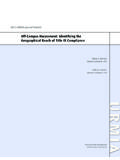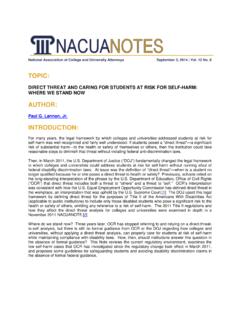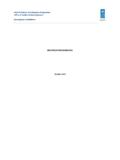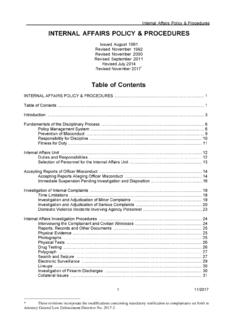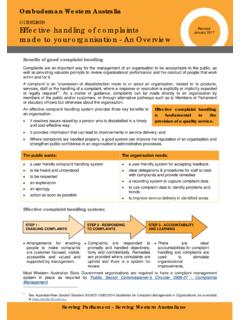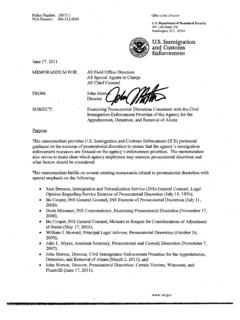Transcription of Compliance and Internal Audit: A Dangerous …
1 Compliance and Internal audit : A Dangerous combination ? By Urton Anderson CIA, CCEP. and Sheryl Vacca, CCEP, CHC-F, CHRC, CHPC. A recent column in the February 2011 issue of the Internal Auditor by Catherine Henry - Governance Perspective: Too Close for Comfort addresses the relatively common practice of combining the Internal audit and the Compliance /ethics functions. Citing a 2009 study of 560. Compliance professionals from both public and privately-held organizations, reported that the organization's Compliance /ethics officer was also the head of Internal audit . This was slightly higher than the other common practice of assigning the Compliance /ethics role to General Counsel (R. Walker, Compliance and Ethics Officer Positioning, Compliance and Ethics Professional, December 2009, pp 46-51).
2 Henry brings up a number of concerns surrounding combining the Internal audit and the Compliance /ethics functions. These concerns include not only the expected auditor independence and objectivity issues but arguments that the combination weakens the effectiveness of Compliance and ethics as well. Her conclusion is that whatever advantage the combination of the two functions might bring to the organization, the dangers to the longer term interest of the organization and its stakeholders make such a combination ill advised. For higher education the issue of duel responsibility is of particular concern as the practice of combining the functions has been particularly common in the university setting as a quick Google or Bing search on Office of audit and Institutional Compliance will illustrate.
3 Susan Keller ( Building a Compliance Program in Higher Education Institutions without a Compliance Officer, College & University Auditor, Spring 2009, p 7) argues that the IA function is a natural driver for development of an institution-wide Compliance functions in universities because in the very decentralized governance structure in higher education it is one of the few groups with university-wide view of risk and control. IA, she notes, is also uniquely positioned to gather, analyze and share information across the institution. In her article, she describes how IA at three major universities has driven the successful development of the Compliance function in those respective institutions, with each still keeping the two functions combined. Others have presented additional benefits to a combined function.
4 In combined Compliance and Internal audit functions collaboration to achieve the responsibilities of both groups is excellent. This collaboration is critical as there are indeed shared roles and responsiblies between the two functions. Rupport ( Contrasting Roles and Responsibilities Corporate Compliance and Internal audit , New Perspectives, Summer 2006) identifies the following commonalities when both functions follow best practices: Functional reporting to the organization's board typically through an audit or Compliance committee. Board established authority via approved charter and programs. Administrative reporting to the CEO. Access to the entire organization per board directive. Recognized and communicated understanding that management is responsible for Internal control including Compliance and that corporate Compliance and Internal audit is not.
5 Have the authority to conduct investigations. Are risk based. As cost centers the functions are not designed to contribute to the bottom line but can identify cost savings and improve organizational processes. Rupport's point that these are commonalities when both functions are following best practices is an important qualification. In particular this implies that both functions are independent of operations. While for Internal audit the need for the function to be independent from operating responsibilities for the area has long been recognized in professional standards; however, the notion of an organizational-wide Compliance function independent from operations is a relatively newer practice in higher education. From an organizational perspective combining the functions has the clear benefit of reducing administrative burden on the CEO or other senior manager to whom the functions would report.
6 A combined function would also make more efficient use of board members time by streamline reporting to the audit / Compliance committee. But an even great benefit may come from the improvement in organizational governance by enabling the board members to more effectively meet their responsibilities for oversight of ethics and Compliance as well as for overall risk management and Internal control. Combining the functions also increases the likelihood that the organization would adopt a common risk management and control framework, further improving the effectiveness of senior management and the board oversight of the organization. For operating managers there is also the benefit of reducing assurance fatigue since a combined function dramatically improve the coordination of auditing and monitoring activities.
7 At the University of California, we have tried to integrate the risk assessment process with IA. and Compliance to leverage efficiencies of the process. Both IA and Compliance develop their own plan but the process of risk assessment is done together, , interviews, collection of related information, This helps to also enhance viewpoints from each of the perspectives and identify areas which may be common for focus on the new year plan for IA and Compliance . While there are many similarities in responsibilities between the Internal audit function and the Compliance function there also key differences. The Internal audit function's primary role in the organization is to provide independent, objective assurance to senior management and the board that risks are being managed to an acceptable level, particularly those risks that management has elected to address through Internal controls.
8 These risks include the risk that organization will not follow legal and regulatory requirements or will violate the organization's values and Internal policies, the same risks with which Compliance is concerned. However, the IA function also has concerns over risks regarding the reliability and integrity of financial and operation information, the risks that the organization's assets are not safeguarded, and the risks that the organization will not achieve its strategic and operating objectives. The Compliance /ethics function in contrast works as a change agents in facilitating and assuring that management is addressing key risk areas (such as those listed above from an IA. perspective) related to Compliance with any rules, regulations, laws and/or policies that must be followed.
9 Additionally, Compliance must provide assurance that the management mechanisms put into place to resolve Compliance risks effectively mitigate the potential and/or real Compliance risks identified. Compliance also has the responsibility to assure that anonymous communication methods are in place for employees to raise issues without fear of retribution and/or retaliation. Another difference in roles is that while IA may take into consideration and provide observations on the ethical culture, for an effective Compliance program the ethical culture and regulatory Compliance must be integrated. The importance of ethical culture in a Compliance program has to do with: active leadership engagement, management control systems and processes, employee commitment and attract good people and encourage them to speak up without the fear of retaliation.
10 Presently, those higher education institutions that have enterprise wide Compliance programs have adapted the United States Sentencing Commission: Federal Sentencing Guidelines for Organizations, Chapter 8 to build their Compliance program. In Chapter 8, seven elements of an effective Compliance program are identified and if evident, credit will be given towards the sentencing for the criminal violation under consideration. The seven elements (paraphrased) are: standards of conduct, oversight, education, auditing & monitoring, communication & reporting, and enforcement & discipline. Because of the diversity of risks, the different functions and business owners in a university setting, enterprise wide Compliance programs are challenging and implemented through different structural models, , centralized, decentralized, hybrid central/decentralized model.


